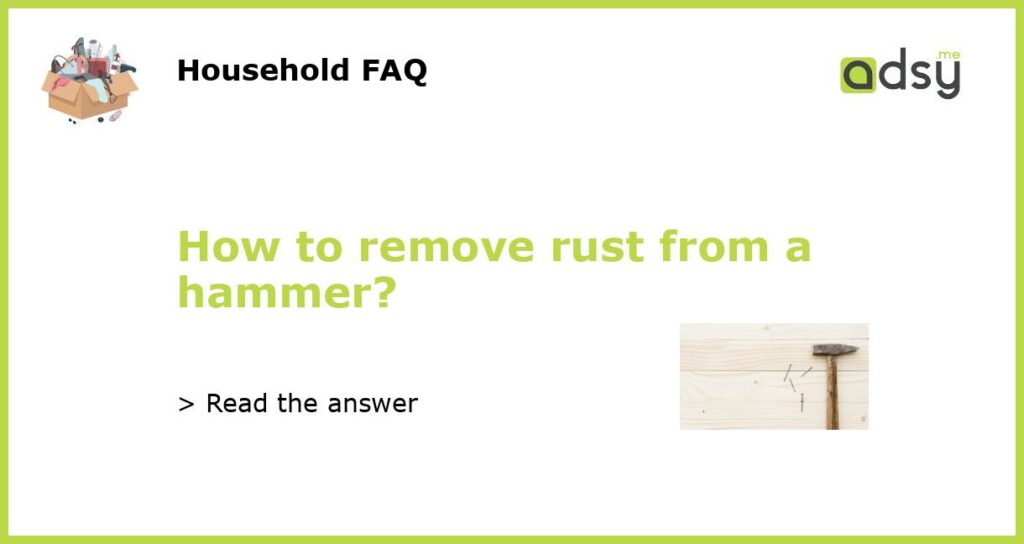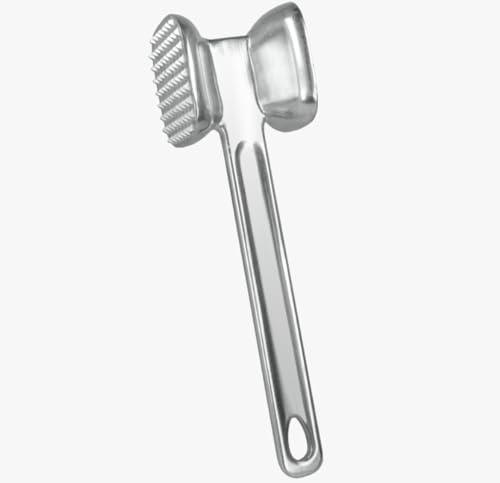Why Does Rust Form on Hammers?
Before diving into how to remove rust from a hammer, it’s important to understand why rust forms in the first place. Rust is a common occurrence on metal objects, such as hammers, due to a chemical reaction known as oxidation. When iron or steel comes into contact with moisture and oxygen, it undergoes a process called corrosion, resulting in the formation of rust. Hammers are particularly susceptible to rust as they are frequently exposed to moisture during use and storage. If left untreated, rust can weaken the metal and compromise the functionality of the tool. Therefore, it is essential to remove rust from hammers to ensure their longevity and usability.
Gather the Necessary Tools and Materials
When it comes to removing rust from a hammer, having the right tools and materials is crucial. Here is a list of items you will need:
- Wire brush or steel wool
- Vinegar or lemon juice
- Baking soda or salt
- Cloth or sponge
- Protective gloves
Ensure that you have all of these supplies ready before you start the rust removal process. This will make the task more efficient and convenient.
Step-by-Step Guide to Remove Rust from a Hammer
Follow these steps to effectively remove rust from your hammer:
Step 1: Prepare a Rust-Removing Solution
Mix vinegar or lemon juice with baking soda or salt to create a rust-removing solution. The acidity of the vinegar or lemon juice helps dissolve the rust, while the abrasiveness of the baking soda or salt aids in scrubbing away the rust. The exact measurements will vary depending on the size of the hammer and the amount of rust present. Start with a small amount of each ingredient and adjust as needed.
Step 2: Apply the Solution to the Hammer
Dip a cloth or sponge into the rust-removing solution and apply it to the rusty areas of the hammer. Make sure to cover the entire surface affected by rust. Allow the solution to sit on the rusted areas for a few minutes to penetrate and loosen the rust.
Step 3: Scrub the Rust Away
Once the rust has had time to loosen, use a wire brush or steel wool to scrub away the rust. Apply gentle pressure and use circular motions to remove the rust from the hammer. Be careful not to scrub too vigorously, as this can damage the metal surface.
Step 4: Rinse and Dry the Hammer
After scrubbing away the rust, rinse the hammer under running water to remove any leftover solution and loosened rust particles. Use a clean cloth or towel to dry the hammer thoroughly. Moisture can lead to further rust formation, so it is essential to ensure the hammer is completely dry before storing or using it.
Step 5: Apply a Rust Inhibitor
To prevent future rust formation, consider applying a rust inhibitor or protective coating to the hammer. This can be in the form of a spray or a thin layer of oil. The rust inhibitor will create a barrier between the metal surface and moisture, effectively reducing the chances of rust formation.
Maintaining Rust-Free Hammers
Now that you have successfully removed rust from your hammer, it is important to maintain its rust-free condition. Here are a few tips to help prevent rust:
- Store your hammers in a dry environment, away from moisture and humidity.
- Regularly oil the metal surfaces of your hammers to protect them from moisture.
- Keep your hammers clean and free from debris to prevent trapped moisture.
- Inspect your hammers regularly for any signs of rust and address them promptly.
By following these maintenance tips, you can ensure that your hammers remain rust-free and in good working condition for years to come.






